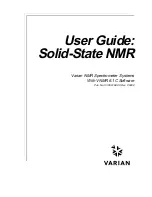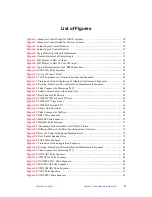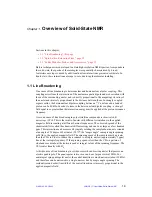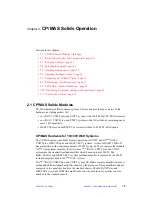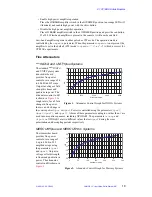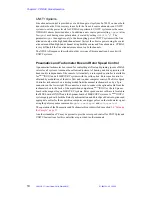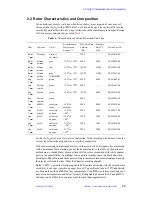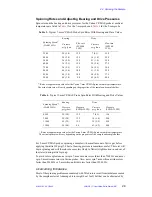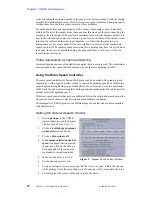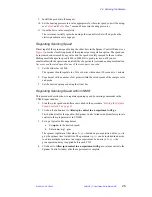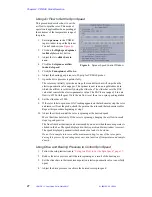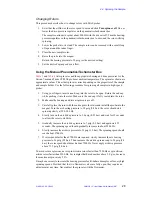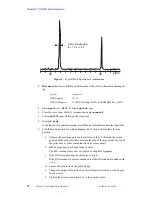
01-999162-00 C0402
VNMR 6.1C User Guide: Solid-State NMR
16
Chapter 2.
CP/MAS Solids Operation
Sections in this chapter:
• 2.1 “CP/MAS Solids Modules,” this page.
• 2.2 “Rotor Characteristics and Composition,” page 20.
• 2.3 “Preparing Samples,” page 21
• 2.4 “Spinning the Sample,” page 22.
• 2.5 “Adjusting Homogeneity,” page 29.
• 2.6 “Adjusting the Magic Angle,” page 32.
• 2.7 “Calibrating the CP/MAS Probe,” page 35.
• 2.8 “Referencing a Solids Spectrum,” page 37
• 2.9 “XPOLAR1—Cross-Polarization,” page 38
• 2.10 “Optimizing Parameters and Special Experiments,” page 41.
• 2.11 “Useful Conversions,” page 44.
2.1 CP/MAS Solids Modules
CP/MAS hardware differs between systems. This section provides an overview of the
hardware (excluding probes) for:
•
UNITY
INOVA, UNITYplus, and UNITY systems with 100/300 Watt CP/MAS accessory
•
UNITY
INOVA, UNITYplus, and UNITY systems with a full solids bay containing one or
more 1 kW amplifiers
• MERCURYplus and MERCURY-Vx systems with the 100/300 CP/MAS option
CP/MAS Hardware for 100/300 Watt Systems
The CP/MAS option is available for most narrow bore UNITY and all
UNITY
INOVA,
UNITYplus, MERCURYplus and MERCURY-Vx systems. A class A/B AMT 3900A-15
linear amplifier, with a maximum output of 100 W for up to 250 ms, replaces the standard
1
H/
19
F liquids linear amplifier for all systems.
UNITY
INOVA, UNITYplus, and UNITY
systems use the standard lowband amplifier which has an output of 300 W. The
MERCURYplus and MERCURY-Vx system lowband amplifier is replaced by the 300 W
lowband amplifier used in the
UNITY
INOVA system.
The
UNITY
INOVA, UNITYplus, and UNITY system CP/MAS accessory amplifier chassis is
distinguished from standard amplifier chassis by the presence of three amplifier bricks as
compared to two amplifier bricks in the standard chassis. The MERCURYplus and
MERCURY-Vx system CP/MAS amplifier chassis is housed in an accessories console
attached to the standard console.

